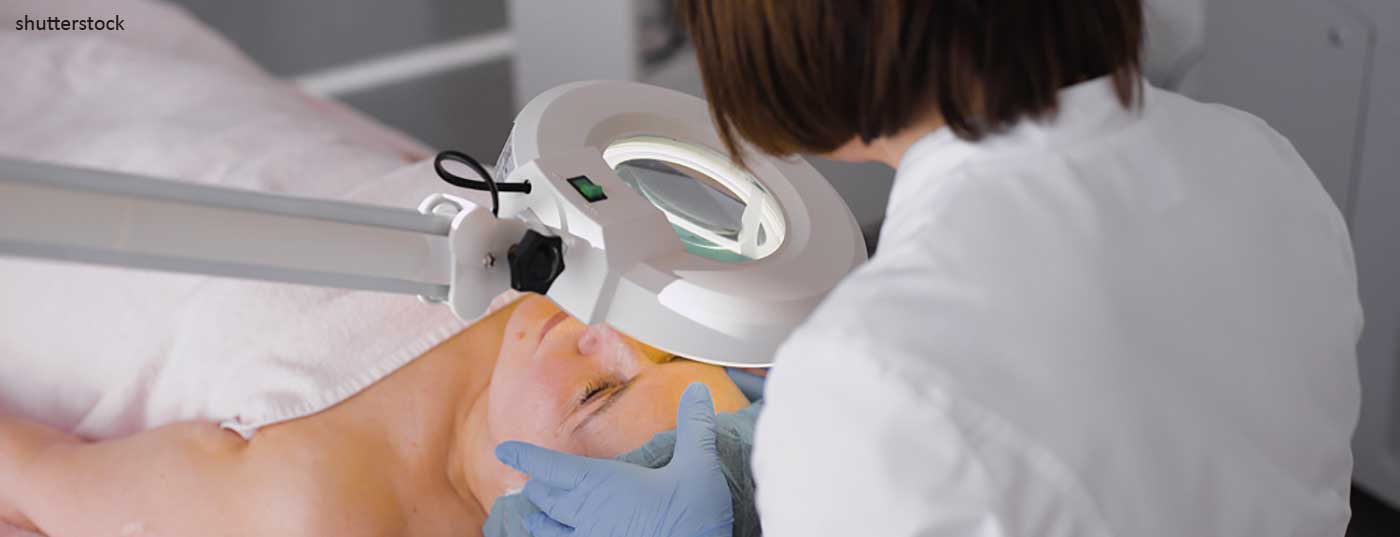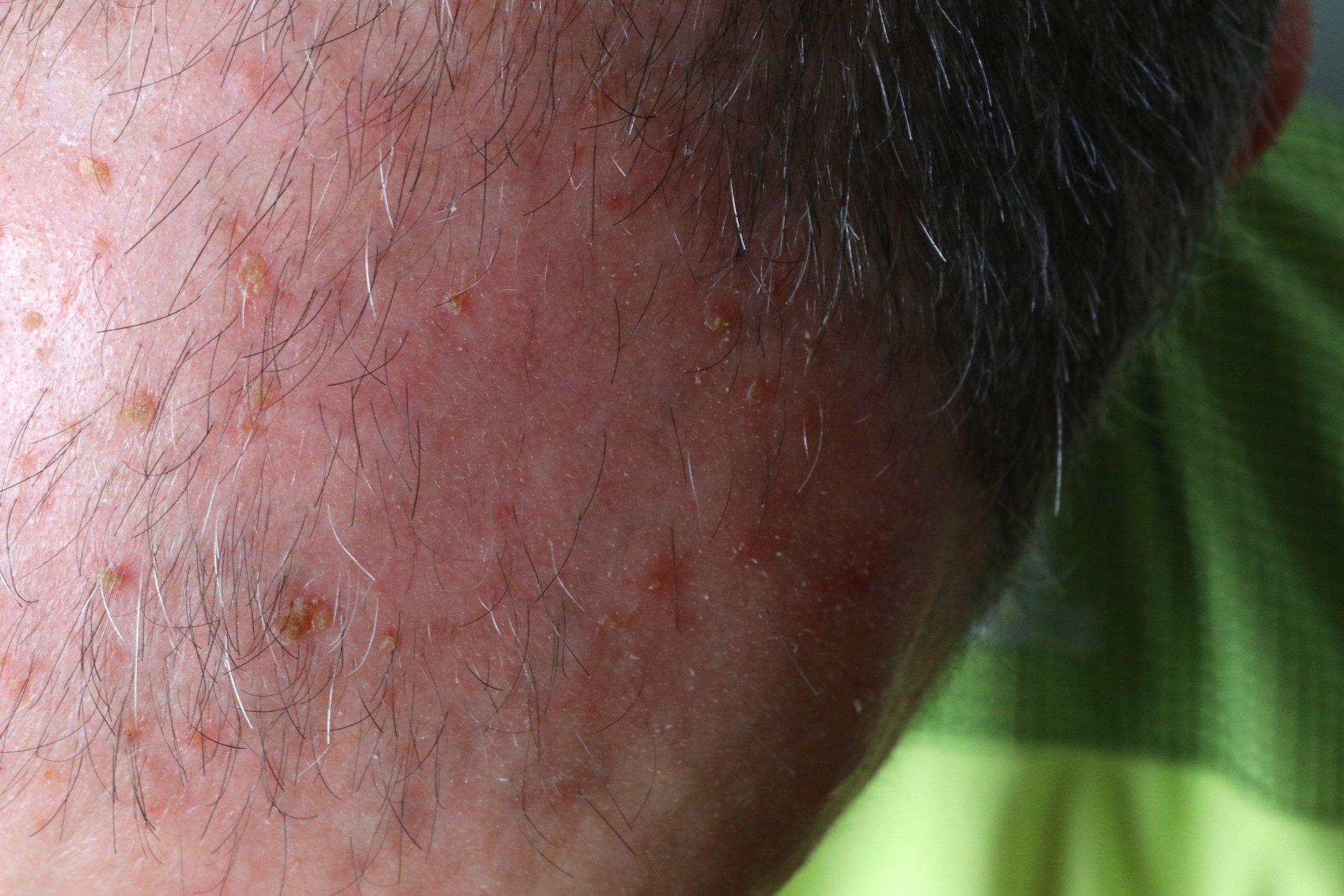Cosmetic products are substances or mixtures for external use on the human body. The variety of products with surprising claims is large. A critical review is indicated.
In the field of microbiome and cosmetics, there have been the following developments in recent years. The Human Microbiome Project was an initiative of the US National Institutes of Health research center with the goal of identifying and characterizing the human microbiome, i.e., the microorganisms that colonize humans (e.g., intestinal, skin flora) [1]. This project has received a great deal of attention in the trade and lay press and has permanently changed the modern consumer’s perception of microorganisms.
Most consumers today are aware that microbial colonization of the gut, as well as the skin, is essential to our health. Unbalanced diet (fats, carbohydrates) can alter the gut microbiome and lead to various disorders [2]. The food industry offers countless products that are supposed to be beneficial to the gut microbiome. The cosmetics industry is also taking advantage of this trend. The Gallinée brand, for example, advertises its patented Triple Biotic Complex, consisting of deactivated probiotics, prebiotics and lactic acid, which are said to “feed” and promote the “good” bacteria on the skin. This trend is promising, as consumers perceive probiotics or prebiotics as safe, natural ingredients that promote wellness. In the context of global aging, maintaining the health of the skin microbiome of the elderly is also an attractive target for the industry. Numerous patents show this impressively (e.g. US Patent Application 20170119827, May 4, 2017: Method and system to improve skin microbiome health).
The importance of the microbiome is also discussed in the context of acne [3], atopic dermatitis [4] or sensitive skin [5]. The outcome of the AOBIOME trial (phase IIB), using active probiotics for the topical treatment of mild to moderate acne, is eagerly awaited in the third quarter of this year [6]. Esse Skincare (Europe) and Mother Dirt (USA) are two brands promoting probiotics in the skin care segment. Promoting cosmetics that contain probiotics or prebiotics is challenging from a regulatory perspective. The promotion on the packaging (primary and secondary container) is usually kept neutral, without mentioning a disease. Accompanying information material, however, occasionally speaks of it, e.g. “for acne-prone skin” – sometimes also without the presence of clinical data.
Little attention has yet been paid to the question of whether and how the regular use of skin care products (almost all of which also contain preservatives) in babies or adults influences the still “young” or already “mature” microbiome. Fortunately, the study of product influence on the microbiome has found its way into the most recent work on skin care products [7]. However, it still seems unclear whether the studies conducted (e.g., duration of application) correctly depict the influence.
Pollution – concepts in cosmetics
More than 80% of people living in urban environments with air pollution are exposed to levels of pollutants that exceed WHO limits [8]. Countries such as China, Japan, South Korea, Indonesia and the Philippines are particularly hard hit. Air pollution outside as well as inside buildings is now considered the greatest environmental health hazard. Strokes and coronary artery disease, chronic lung disease or certain tumors are associated with this pollution. In the dermatological literature, the relationship between the environment and skin changes is also the subject of lively discussion.
From the exposome [9], which represents the totality of all non-genetic, endogenous as well as exogenous environmental influences to which an individual is exposed throughout life, factors affecting skin aging or common dermatological diseases are discussed above all. The factors are solar radiation, air pollution, temperature, diet, stress, lack of sleep and tobacco use [10]. Meanwhile, it has been shown several times that there is a significant association between exposure to traffic-related airborne particulate matter or exposure to soot particles and the appearance of skin aging signs. The strongest associations were found for the risk of developing facial pigment spots (lentigines). The association with increased skin wrinkling was weaker [11]. It has also been described that air pollution can affect the disease course of acne or atopic dermatitis [12,13].
The increasing number of scientific papers on the subject of “environment and skin” over the past 20 years, as well as the large markets in Asia with a rapidly growing number of customers with purchasing power, have led the cosmetics industry to develop a variety of anti-environmental pollution concepts. These include specific skin cleansing (“in polluted cities, it may take two washes to cleanse the skin”), nutrition (!), strengthening, protecting or even repairing the skin. Here, the already known vitamins or antioxidants, but also so-called innovative cosmetic agents are used, e.g. EOSIDINTM (“the immuno-modulator for indoor pollution control”) or E/Z-2-benzylidene-5,6-dimethoxy-3,3-dimethyl-indan-1-one (BDDI, “aryl hydrocarbon receptor antagonist”) [14]. Special film-forming ingredients (e.g. SkinBlitz by CHEMYUNION) are also offered in liquid and semi-solid formats to seal the skin, but also the applied cosmetics, against environmental influences. The effects of some cosmetic active ingredients, which may be pharmacological or immunological, are occasionally well documented in the scientific literature in vitro as well as in vivo. Here, one might be tempted to bring products with such active ingredients close to pharmaceuticals (prevention). With regard to the differentiation from product groups such as pharmaceuticals, biocidal products or foodstuffs, the decisive factor is primarily what the consumer considers to be the predominant purpose of the respective product (cleaning, protecting, keeping in good condition). To distinguish cosmetic products from medicinal products, the European Commission has published comprehensive documentation on its website [15,16]. This list of criteria was developed based on the previous case law of the European Court of Justice. It goes without saying that the promotion of anti-environmental pollution cosmetics semantically serves the consumer’s view accordingly.
HEV light – Should we protect ourselves from it?
HEV stands for “high energy visible”, i.e. high energy visible light (400-500 nm). It is also often referred to as “blue light”, “ultra blue light” or even “screen light”. HEV lies in the light spectrum directly next to the known UV-A radiation and glows blue to purple. While the effects of UV radiation have been widely studied and are well known, the effects of HEV light in this context have only recently been examined in more detail. The first scare stories are already appearing on the Internet: “Is your iPhone ruining your skin? (the Blue Light Protector for the iPhone is already available on Amazon) or “Do we have to put cream on our skin in front of the TV now? In the Asian region, the first cosmetic products are on the market that explicitly offer a “blue light block” (Attenir Hidan). Most are more familiar with blue light in the context of acne therapy [17]. What evidence is available to suggest that protection from blue lights is appropriate?
In purely theoretical terms, it is conceivable that HEV light causes comparable skin damage to UV-A radiation – especially in the near UV-A range (300-400 nm) (light aging, DNA damage, etc.) [18]. Nakashima and coworkers show in a mouse model, which can be used to visualize reactive oxygen species (ROS) in living animals, that mitochondrial oxidative stress can be generated with blue light but not with green, red, and infrared light. The researchers also show that blue light from the sun decreases flavin autofluorescence in the skin. They conclude that blue light has a skin physiological effect [19]. Mamalis and coworkers show in vitro that blue light from LED lamps reduces the migration rate of fibroblasts. Pretreatment of the fibroblasts with the antioxidant resveratrol prevented this effect. The authors conclude that the antioxidants neutralized the reactive oxygen species produced by the blue light [20]. In eight subjects irradiated with blue light on the buttocks for five consecutive days, Kleinpenning and coworkers were unable to detect signs of skin aging and skin damage (p53, MMP-1 expression, elastosis). However, they note a temporary minimal pigmentation [21].
The three works are very well documented. However, none of the authors discuss the blue light doses used in the experiments in comparison to the doses we get in everyday life – i.e., in front of the TV or computer. Further work will hopefully soon answer this question and assess clinical relevance. The industry is already providing the first filters and “innovative blue light products” are sure to be launched here in Europe soon.
Summer hit 2017 – “all in one” sun protection products
With this surprising slogan, a cosmetics supplier announces an innovative sunscreen spray. An SPF of 20 is achieved by spraying the product onto the skin for ten seconds. If a higher protection factor is desired (SPF 30), another layer can be sprayed on for ten seconds three minutes after the first application. For SPF 50+, a third layer can be applied after another three minutes. This promotion seems very practical and simple. One is almost tempted to ask why this is only coming today and whether it is really true.
The advertising is correct in purely theoretical terms. As we know from everyday life, when painting a wall, the opacity of a color is increased by a second or even third coat. By increasing the number of sunscreen filter molecules on the skin, following chemical-physical legislation, more photons are “captured”, neutralized and thus the protective power is increased. However, the application of sunscreen sprays also has some pitfalls. In practice, spraying over ten seconds seems long and is therefore rarely observed. When sprays are used, a not inconsiderable proportion of the spray droplets miss the skin.
Even if the practical implementation has some pitfalls, this recommended application shows that only a sufficient amount of sunscreen filter molecules guarantees the declared sun protection performance of the product. Many studies have shown that most users of sunscreen products apply, in some cases, less than half the amount of sunscreen product necessary to reach the declared level (2 mg/cm2) [22]. For practical reasons, therefore, twice a day creaming – especially on the “sun terraces” – should be recommended.
Take-Home Messages
- Cosmetic products are defined as substances or mixtures intended for external application to the human body.
- Their exclusive or predominant function is to clean, protect, maintain in good condition, perfume, change the appearance of or influence body odor of the skin, hair, nails, lips, external intimate regions or teeth and oral mucous membranes.
- The seemingly clear definition nevertheless leaves plenty of room for products with surprising claims.
Literature:
- Human Microbiome Project Consortium: Structure, function and diversity of the healthy human microbiome. Nature 2012; 486(7402): 207-214.
- Myles IA: Fast food fever: reviewing the impacts of the Western diet on immunity. Nutr J 2014; 13: 61.
- Barnard E, et al: The balance of metagenomic elements shapes the skin microbiome in acne and health. Sci Rep 2016; 6: 39491.
- Wollina U: Microbiome in atopic dermatitis. Clin Cosmet Investig Dermatol 2017; 10: 51-56.
- Guéniche A, et al: Bifidobacterium longum lysate, a new ingredient for reactive skin. Exp Dermatol 2010; 19(8): e1-8.
- AOBIOME. http://aobiome.com
- Stettler H, et al: A new topical panthenol-containing emollient: Results from two randomized controlled studies assessing its skin moisturization and barrier restoration potential, and the effect on skin microflora. J Dermatolog Treat 2017; 28(2): 173-180.
- WHO: WHO Global Urban Ambient Air Pollution Database (update 2016). http://www.who.int/phe/health_topics/outdoorair/databases/cities/en.
- Wild CP: The exposome: from concept to utility. Int J Epidemiol 2012; 41(1): 24-32.
- Krutmann J, et al: The skin aging exposome. J Dermatol Sci 2017; 85(3): 152-161.
- Vierkötter A, et al: Airborne particle exposure and extrinsic skin aging. J Invest Dermatol 2010; 130(12): 2719-2726.
- Krutmann J, et al: Pollution and acne: is there a link? Clin Cosmet Investig Dermatol 2017; 10: 199-204.
- Kim YM, et al: Short-term effects of weather and air pollution on atopic dermatitis symptoms in children: A panel study in Korea. PLoS One 2017; 12(4): e0175229.
- Tigges J, et al: The new aryl hydrocarbon receptor antagonist E/Z-2-benzylindene-5,6-dimethoxy-3,3-dimethylindan-1-one protects against UVB-induced signal transduction. J Invest Dermatol 2014; 134(2): 556-559.
- European Commission. http://ec.europa.eu/consumers/sectors/cosmetics/files/doc/guidance_doc_cosm-medicinal_en.pdf
- European Commission. http://ec.europa.eu/growth/sectors/cosmetics/products/borderline-products_en
- Barbaric J, et al: Light therapies for acne: abridged Cochrane systematic review including GRADE assessments. Br J Dermatol 2017; doi: 10.1111/bjd.15495 [Epub ahead of Print].
- Edström DW, et al: Effects on human skin of repetitive ultraviolet-A1 (UVA1) irradiation and visible light. Photodermatol Photoimmunol Photomed 2001; 17(2): 66-70.
- Nakashima Y, et al: Blue light-induced oxidative stress in live skin. Free Radic Biol Med 2017; 108: 300-310.
- Mamalis A, et al: Resveratrol Prevents Reactive Oxygen Species-Induced Effects of Light-Emitting Diode-Generated Blue Light in Human Skin Fibroblasts. Dermatol Surg 2016; 42(6): 727-732.
- Kleinpenning MM, et al: Clinical and histological effects of blue light on normal skin. Photodermatol Photoimmunol Photomed 2010; 26(1): 16-21.
- Bimczok R, et al: Influence of applied quantity of sunscreen products on the sun protection factor – a multicenter study organized by the DGK Task Force Sun Protection. Skin Pharmacol Physiol 2007; 20(1): 57-64.
DERMATOLOGIE PRAXIS 2017; 27(4): 20-23












